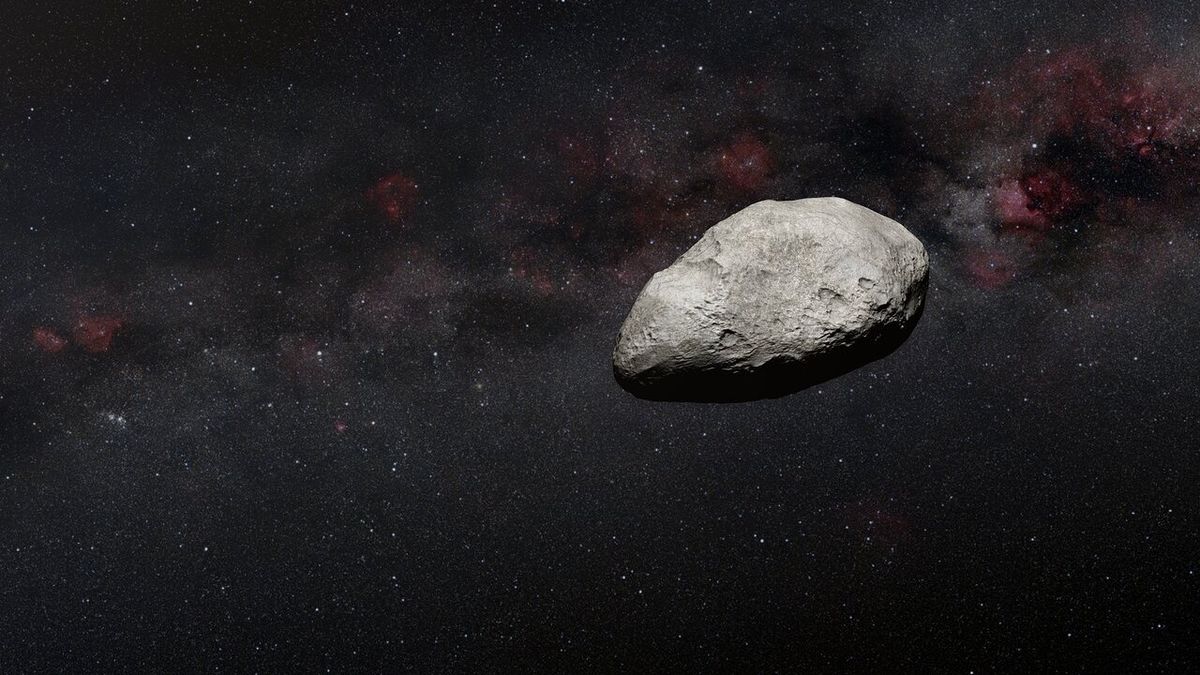he James Webb Space Telescope just found an asteroid by total accident, its smallest object yet
By Robert Lea published 1 day ago
The Washington Monument-sized space rock was discovered in data not intended to hunt asteroids and shows how useful the powerful telescope is close to home.

This artist's impression shows a grey, irregularly-shaped asteroid against a dark background.
An artist's impression of a grey, irregularly-shaped asteroid against a dark background. (Image credit: N. Bartmann (ESA/Webb), ESO/M. Kornmesser and S. Brunier, N. Risinger (skysurvey.org))
The James Webb Space Telescope (JWST) unexpectedly discovered a small asteroid. The space rock is around the size of the Colosseum in Rome and might well be the smallest object that the space telescope has spotted since it was sent into space at the end of 2021.
Though the James Webb Space Telescope has been making waves in astronomy by discovering massive celestial objects sometimes as far away as billions of light-years, the new finding demonstrates the powerful instrument's unpredicted usefulness much closer to home.
Even more impressively, the team that found the 330- to 660-foot (100 to 200-meter) asteroid did so using data collected to calibrate the Mid-InfraRed Instrument (MIRI) that was never intended to reveal new asteroids.
"We — completely unexpectedly — detected a small asteroid in publicly available MIRI calibration observations," Max Planck Institute for Extraterrestrial Physics astronomer Thomas Müller said in a statement.(opens in new tab) "The measurements are some of the first MIRI measurements targeting the ecliptic plane and our work suggests that many, new objects will be detected with this instrument."
More:
https://www.space.com/james-webb-space-telescope-asteroid-accident-smallest-object
